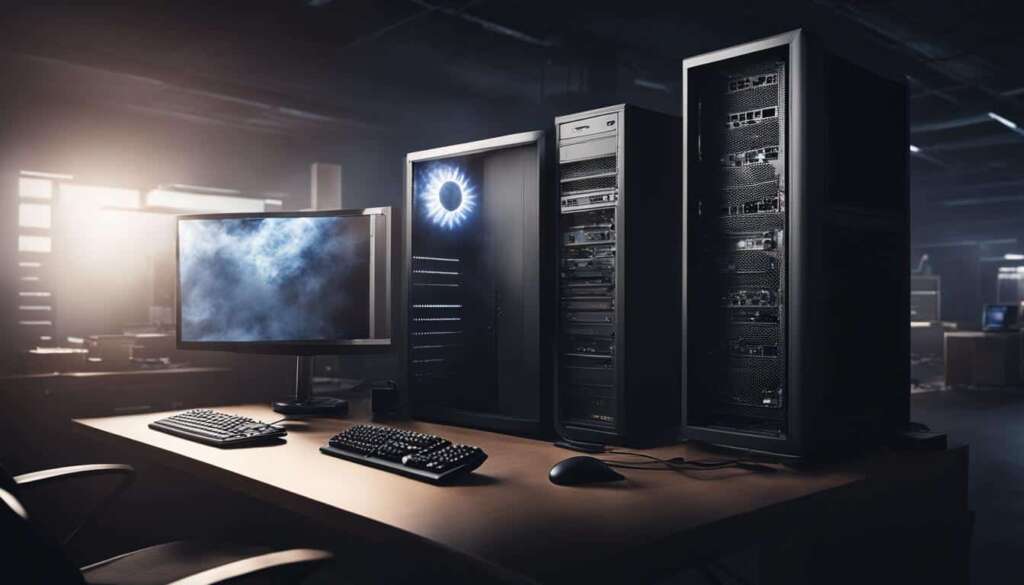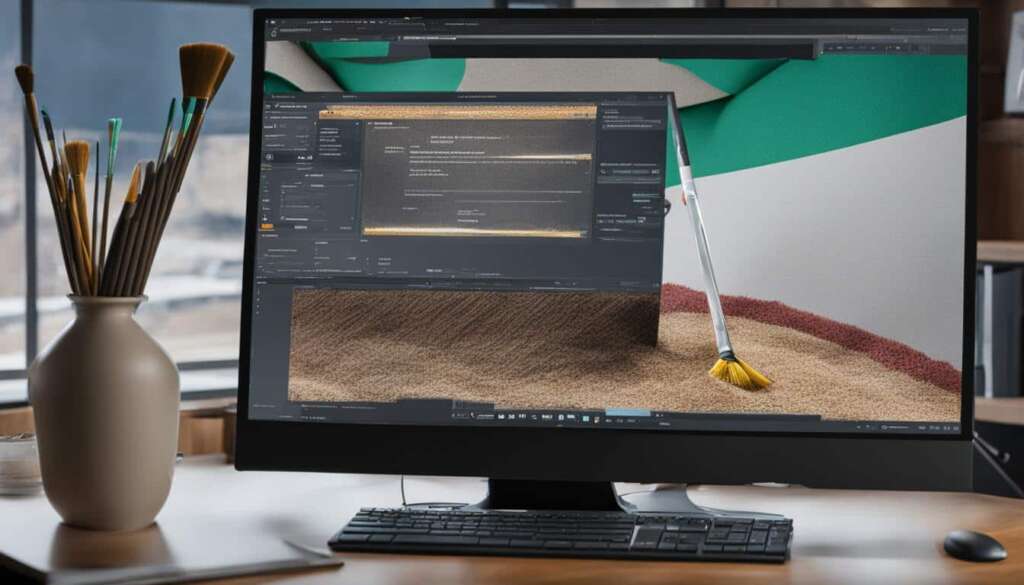Table of Contents
If you’re struggling with the frustrating issue of your PC not turning on, there can be a variety of reasons behind it. It could be due to power supply issues, heat problems, or even a faulty motherboard. Troubleshooting can help pinpoint the exact cause and find practical solutions to restore your system. Here are some steps you can take to troubleshoot your PC startup issues.
One of the first things you should do is to unplug your PC and check for loose power connections. Re-seating all of the motherboard, add-in card, and drive power cables can ensure a secure connection. Additionally, check for non-spinning fans and clogged fans or heatsinks, as these can cause overheating issues. It’s also a good idea to reset the CMOS battery and make sure all hardware components are properly seated. By going through these steps, you can address any potential power or hardware-related problems.
If the previous steps haven’t resolved the issue, it’s worth testing the power supply. Swapping out the power cable, keyboard, and monitor one at a time can help identify if any of these components are causing the problem. It’s also important to test the RAM by removing all but one module and ensuring it is properly seated. At this point, you should also check if your fans and heatsinks are clear of dust and apply thermal paste if necessary. By testing the power supply and memory, you can rule out potential culprits and narrow down the cause of your PC not turning on.
If you’ve reached this point and your PC still won’t turn on, there are a few additional troubleshooting steps you can take. Try replacing the video card with a borrowed one to see if that resolves the issue. If not, it could be a problem with the motherboard or even the CMOS battery. Make sure your PC is plugged into a surge protector or UPS and check if the surge protector’s power switch is turned on. Finally, consider replacing the CMOS battery as it may be responsible for booting issues. By following these steps, you can identify and potentially fix the cause behind your PC not turning on.
Checking Power Connections and Hardware
When your PC refuses to turn on, it’s essential to start troubleshooting by checking power connections and hardware. By examining these components, you can identify and address potential issues that may prevent your computer from powering up.
Unplug and Inspect Power Connections
The first step is to unplug your PC and carefully examine power connections. Loose or faulty connections can disrupt the flow of power, causing your PC to remain unresponsive. Ensure all cables are securely plugged in, including those connected to the motherboard, add-in card, and drives.
Reseat Hardware Components
If power connections appear to be intact, the next action is to reseat hardware components. Over time, these components can become loose, leading to connection issues. Begin by turning off your PC and disconnecting all power cables. Then, remove and securely reinsert the various hardware components, such as RAM modules, graphics cards, and storage drives. This process ensures proper alignment and a secure connection that facilitates efficient power delivery.
Check for Non-Spinning and Clogged Fans
Non-spinning fans or those obstructed by dust can contribute to overheating problems, which may prevent your PC from turning on. Carefully inspect each fan to ensure they are clean, free of debris, and spinning properly. If clogged, use compressed air or a soft brush to remove any accumulated dust and promote effective cooling.
Reset the CMOS Battery
The CMOS battery, responsible for storing system settings, can sometimes cause start-up issues when it becomes corrupted. To reset it, simply locate the CMOS battery on your motherboard and remove it for a few minutes before reinstalling. This process restores the default settings and can resolve certain power-related problems.
By performing these essential checks and taking appropriate actions, you can effectively troubleshoot power and hardware-related issues, increasing the chances of restoring your PC’s functionality.
| Common Power Connection and Hardware Issues | Possible Solutions |
|---|---|
| Loose power connections | Check and reseat power cables |
| Non-spinning fans | Clean or replace fans, ensure proper airflow |
| Clogged fans or heatsinks | Remove dust and debris using compressed air or a soft brush |
| CMOS battery issues | Reset or replace the CMOS battery |
Through careful investigation and addressing these power connection and hardware concerns, you can troubleshoot effectively and increase the likelihood of resolving your PC’s startup issues.
Testing the Power Supply and Memory
If the previous troubleshooting steps haven’t resolved the issue of your PC not turning on, it’s worth testing the power supply and memory to further narrow down the cause. Power supply issues and RAM problems can often be the culprits behind startup failures and boot loops. By properly testing these components, you can rule out potential causes and find a solution to get your PC up and running again.
Testing the Power Supply
The power supply is crucial for providing the necessary electrical power to your PC’s components. If it is faulty or not functioning correctly, it can prevent your computer from turning on. One way to test the power supply is by swapping out the power cable with another one to ensure the cable isn’t the issue. Simply unplug the current power cable from both the power supply and the wall outlet, and replace it with a different cable. Make sure to use a cable that you know works properly.
If swapping the power cable doesn’t solve the problem, you can also try connecting your PC to a different power outlet to eliminate the possibility of a faulty wall socket. Additionally, testing your PC with another power supply can help determine if the issue lies with the power supply unit (PSU) itself. If your PC turns on with a different PSU, it may be time to replace your current power supply.
Remember to exercise caution when working with electricity. If you’re unsure about how to safely test the power supply, it’s best to seek the assistance of a professional.
Testing the Memory (RAM)
Faulty or improperly seated memory modules can also cause your PC to not turn on or to get stuck in a boot loop. Testing the RAM can help determine if this is the case. Start by powering down your PC and disconnecting the power cable. Open the computer case and locate the RAM modules, which are typically long, rectangular sticks inserted into slots on the motherboard.
Begin by removing all but one RAM module from your PC, and then try powering it back on. If your PC turns on successfully, you’ve identified a faulty RAM module. Proceed to test each RAM module individually using the same process. If a particular module causes issues or prevents your computer from turning on, it’s likely that module is defective and needs to be replaced.
It’s also important to check that the RAM modules are properly seated in their slots. Gently push down on each module to ensure they are securely inserted. Loose or improperly seated RAM can result in startup problems.
Checking Fans, Heatsinks, and Applying Thermal Paste
In addition to testing the power supply and memory, it’s a good idea to check the fans and heatsinks in your PC for any dust accumulation. Dust can obstruct airflow, causing overheating and system instability. Use a can of compressed air to carefully clean out any dust from the fans and heatsinks.
If you notice that your PC’s performance has been deteriorating or that it’s shutting down due to excessive heat, apply thermal paste on the CPU between the processor and heatsink. This helps improve heat transfer and can alleviate temperature-related issues.
Remember to apply thermal paste sparingly and in accordance with the manufacturer’s instructions. Too much thermal paste can actually impede heat dissipation and cause further problems.
Additional Troubleshooting Steps
If you’ve reached this point and your PC still won’t turn on, don’t panic. There are a few more troubleshooting steps you can try to get to the root of the problem. Start by examining the video card. Replace it with a borrowed one to see if the issue lies with your current card. Sometimes, faulty video cards can prevent your PC from starting up properly.
Should the video card replacement fail to solve the problem, it’s time to turn your attention to the motherboard. It’s possible that there are issues with the connections or components on the motherboard that are causing the power-on problem. Seek professional assistance or consult your motherboard manufacturer’s support for further guidance on how to diagnose and resolve motherboard-related issues.
Furthermore, check if your PC is plugged into a surge protector or an uninterruptible power supply (UPS). Verify that the surge protector’s power switch is turned on and it is functioning properly. Faulty surge protectors can disrupt the flow of power to your PC, resulting in a failure to start up.
Finally, consider replacing the CMOS battery. The CMOS battery provides power to the motherboard’s BIOS and stores vital system information. A worn-out or faulty CMOS battery can cause booting issues and prevent your PC from turning on. Look for a replacement battery that matches the specifications of your motherboard, and carefully follow the manufacturer’s instructions to replace it.
FAQ
Why won’t my PC turn on?
There can be various reasons behind your PC not turning on, such as power supply issues, heat problems, or a faulty motherboard. Troubleshooting can help identify the cause and find practical solutions to fix the problem.
How can I check the power connections and hardware?
Start by unplugging your PC and checking for loose power connections. Make sure all cables are securely connected to the motherboard, add-in cards, and drives. Additionally, check for non-spinning fans and clogged fans or heatsinks, as these can lead to overheating. Resetting the CMOS battery and ensuring proper seating of hardware components is also recommended.
How do I test the power supply and memory?
If the previous steps haven’t resolved the issue, try swapping out the power cable, keyboard, and monitor, one at a time, to identify if any of these components are causing the problem. It’s also important to test the RAM by removing all but one module and ensuring it is properly seated. Cleaning dust from fans and heatsinks and applying thermal paste if needed is also advisable.
What additional troubleshooting steps can I take?
If your PC still won’t turn on, consider replacing the video card with a borrowed one to see if that resolves the issue. If not, it could indicate a problem with the motherboard or CMOS battery. Make sure your PC is plugged into a surge protector or UPS and check if the surge protector’s power switch is turned on. Lastly, replacing the CMOS battery may help with booting issues.







